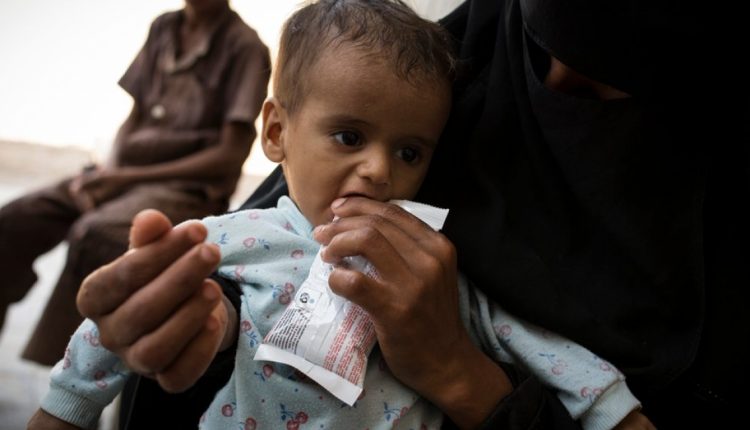YEMEN: “WORLD’S WORST HUMANITARIAN CRISIS” WORSENS
HUMANITARIAN CRISIS IN FREE FALL
After almost four years of conflict, and despite all efforts to halt displacement, hunger and disease, Yemen remains the worst humanitarian crisis on earth. The suffering inflicted on Yemeni people is entirely manmade and will continue to deteriorate rapidly on all fronts without actions to end the violence.
Increased fighting risks pushing the country into utter devastation: The ongoing escalation around the port city of Hodeidah jeopardizes the safety of civilians and threatens the channels for critical fuel, food and medical supplies to the rest of the country. It is crucial that this remains open. The lives of millions of Yemeni women, men and children hang on this lifeline.
Civilians continue to bear the brunt: Civilians and civilian infrastructure, such as markets, hospitals, school buses and mills continue to be hit by all parties with impunity, as reported by the UN Group of Eminent Experts on Yemen.
Attacks on schools and hospitals continue with over 1,800 schools directly impacted by the conflict, including more than 1,500 that have been damaged or destroyed and 21 used by armed groups.
A lost generation of Yemeni children: Two million children and young people remain out of school, depriving them of an education and exposing them to higher levels of violence and exploitation. Millions of displaced children cannot access education, and ongoing attacks on schools or their use by armed groups mean children’s safety at school cannot be guaranteed.
Populations on the brink of starvation: 17.8 million people, over 60 percent of the population, are food insecure and over 8.4 million of them stand on the brink of starvation; 4.2 million of them children and another million children at risk as food and fuel prices soar across the country. Malnutrition directly threatens lives but also weakens the immune system, leading to people dying from preventable diseases, including cholera and pneumonia. Breast-feeding mothers, children and the elderly remain particularly vulnerable. Half of all Yemeni children are stunted where these children are unable to access the nutrients their bodies need to grow, reducing their ability to learn and thrive.
A struggling economy continues to falter: A crippled economy continues to weaken, with the recent sharp devaluation of the Yemeni Riyal (YER) further constraining peoples’ ability to purchase food and medicine, with many having to make agonizing choices between the two and many others left with too little to access either.
Protracted conflict and eroding safety nets has left millions of Yemeni without access to livelihoods or the ability to deal with economic shocks. An estimated 1.2 million public servants, especially in northern governorates, have not been paid their usual salaries in more than two years and a war economy has left millions with very few earning opportunities.
Barriers to access continue: Restrictions to land, sea and air trade routes have led to severely reduced supplies of vital commodities. In addition to uncertainty about the accessibility of Yemen’s ports, particularly Hodeidah, Sana’a’s airport has been closed to commercial flights since August 2016; further restricting the mobility of the Yemeni population. While the new ‘medical airbridge’ agreement is welcome, this is a small concession that continues to leave the majority of Yemeni people without freedom to seek medical treatment overseas.
In addition, 1.4 million people remain in hard-to-reach areas, unable to access vital assistance and support, an increase of 200,000 since February 2018. Escalation in fighting has exacerbated these challenges, with hundreds of thousands displaced in recent months, including close to half a million from Hodeidah since June 2018.

